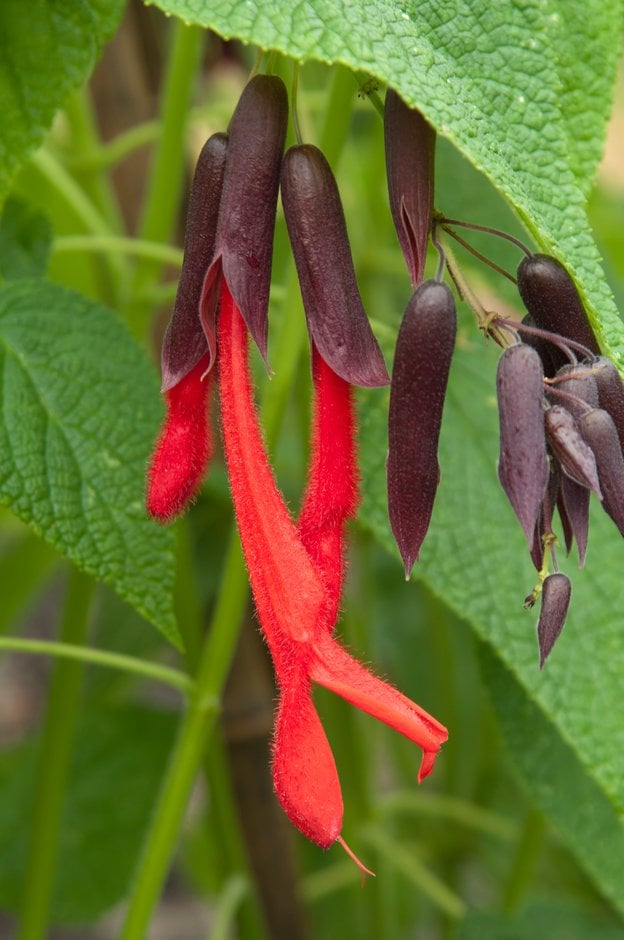Salvia dombeyi
giant Bolivian sage
A spreading shrub with long, slender scrambling stems up to 2.5m tall and heart-shaped mid-green leaves to 20cm long. Clusters of long, pendulous, bright red, hairy flowers up to 9cm long emerge from dark purple calcyes and are borne from summer into autumn

Buy this plant
Size
Ultimate height
1.5–2.5 metresTime to ultimate height
2–5 yearsUltimate spread
1–1.5 metresGrowing conditions
Moisture
Moist but well–drained, Well–drainedpH
Acid, Alkaline, NeutralColour & scent
| Stem | Flower | Foliage | Fruit | |
| Spring | Green | |||
|---|---|---|---|---|
| Summer | Purple Red | Green | ||
| Autumn | Purple Red | Green | ||
| Winter |
Position
- Full sun
- Partial shade
Aspect
West–facing or South–facing
Exposure
Sheltered Hardiness
H2Botanical details
- Family
- Lamiaceae
- Native to GB / Ireland
- No
- Foliage
- Semi evergreen
- Habit
- Bushy
- Genus
Salvia can be annuals, biennials, herbaceous or evergreen perennials, or shrubs. They have paired, simple or pinnately lobed, often aromatic leaves and 2-lipped flowers in whorls, forming simple or branched spikes or racemes
- Name status
Correct
- Plant range
- Peru Bolivia
How to grow
Cultivation
Grow under glass in peat-free potting compost in full light with shade from hot sun. Grow outdoors in moderately fertile, moist but well-drained soil in full sun or dappled shade in a frost-free border. Protect from excessive winter wet. Climbing stems benefit from support provided by other plants or a trellis. See our video How to care for tender salvia for more advice
Propagation
Suggested planting locations and garden types
- Cottage and informal garden
- Patio and container plants
- City and courtyard gardens
- Coastal
- Gravel garden
- Sub-tropical
- Wildlife gardens
- Conservatory and greenhouse
Pruning
Pruning group 9; cut back overwintered plants in spring
Pests
May be susceptible to slugs, snails and capsid bug, aphids, glasshouse red spider mite and glasshouse whitefly
Diseases
May be susceptible to honey fungus (rarely), powdery mildews, verticillium wilt and foot and root rots
Get involved
The Royal Horticultural Society is the UK’s leading gardening charity. We aim to enrich everyone’s life through plants, and make the UK a greener and more beautiful place.